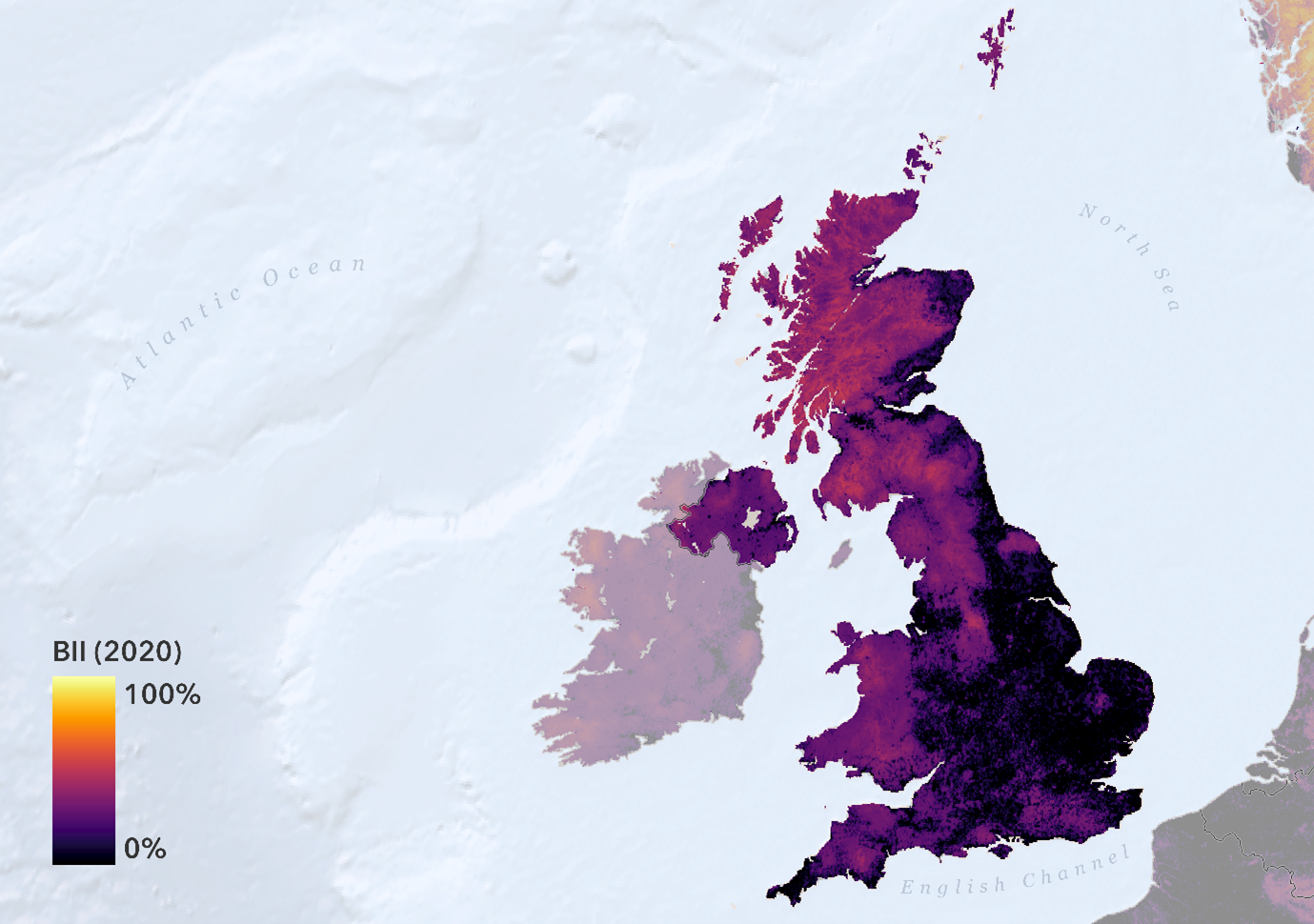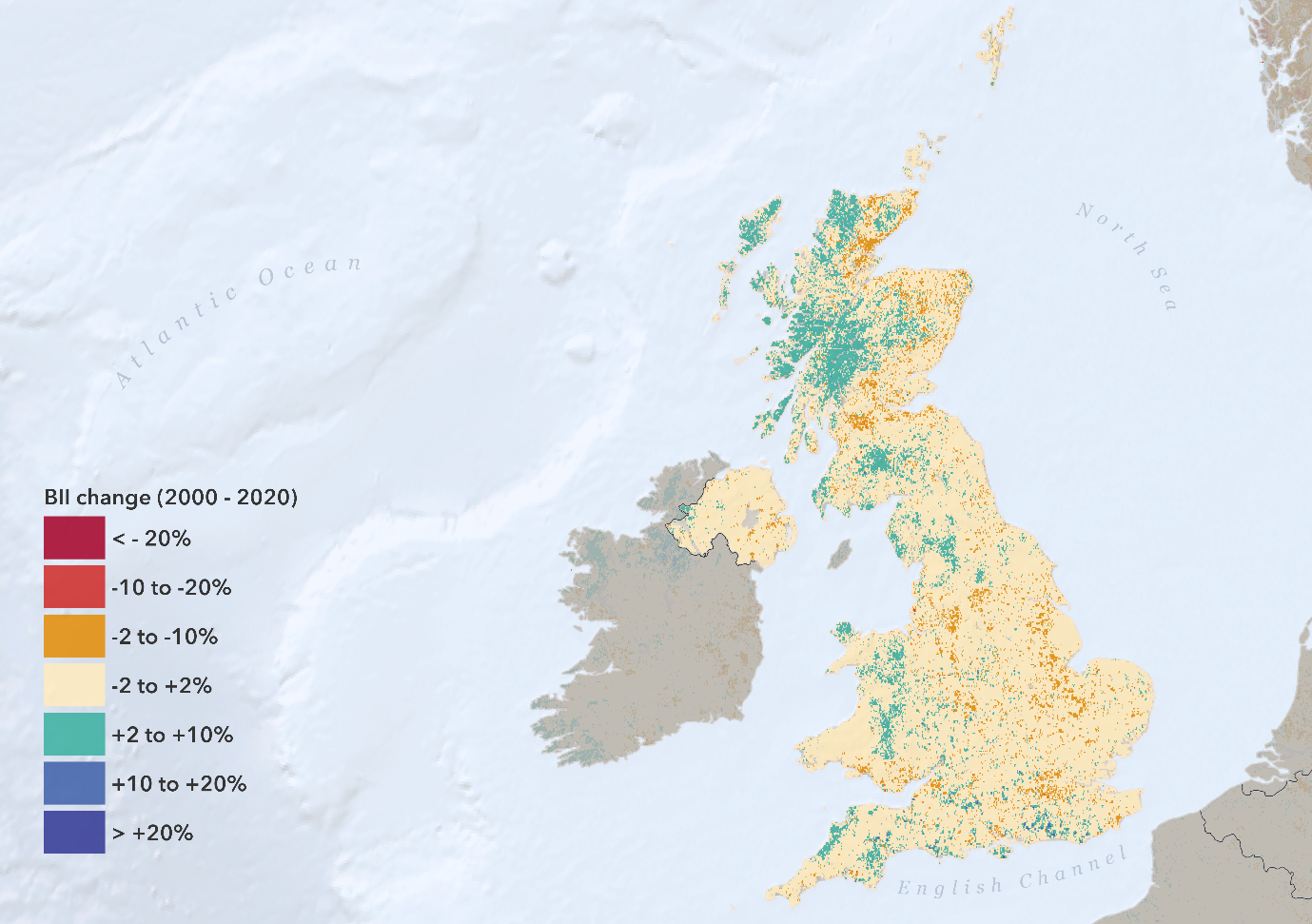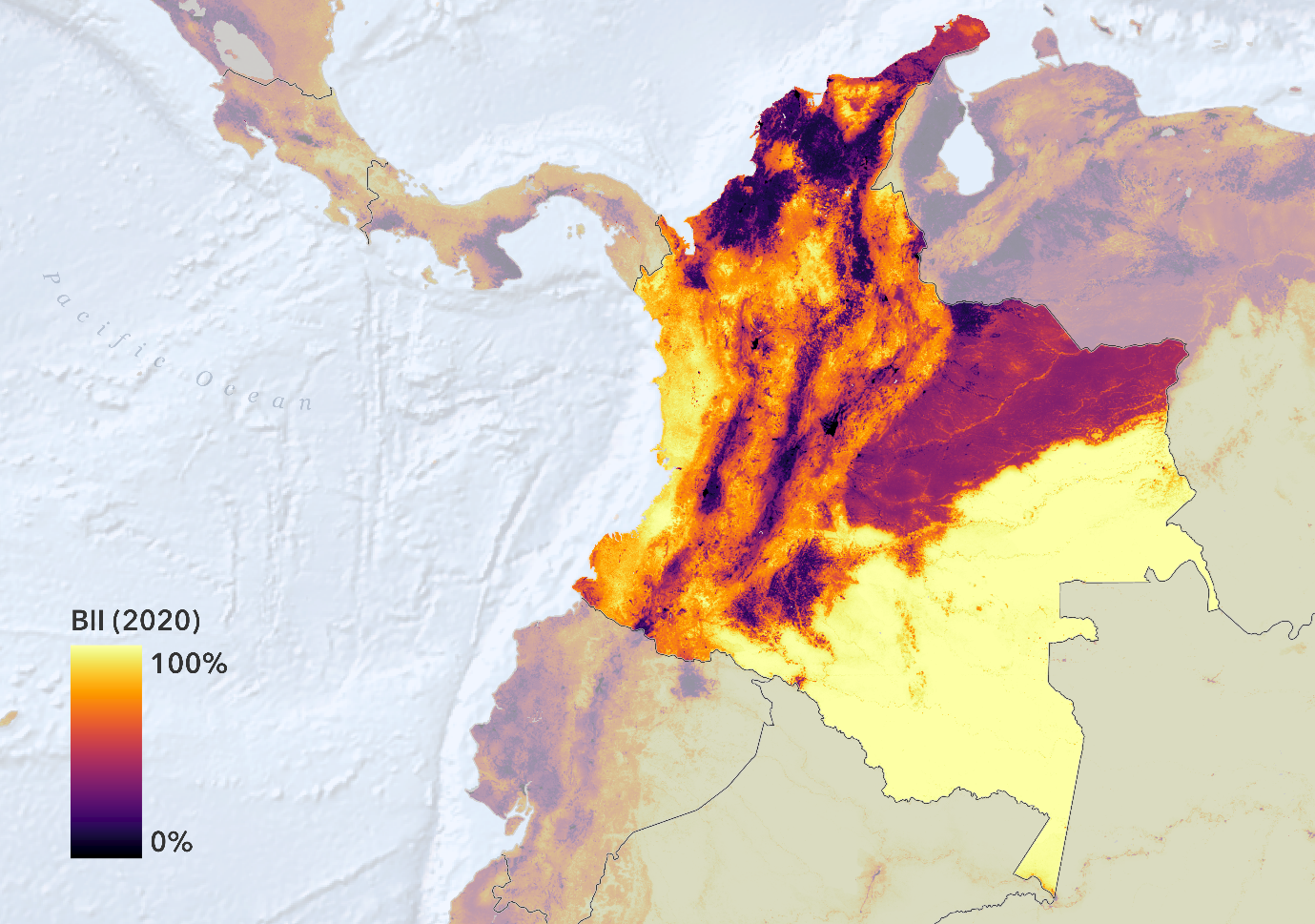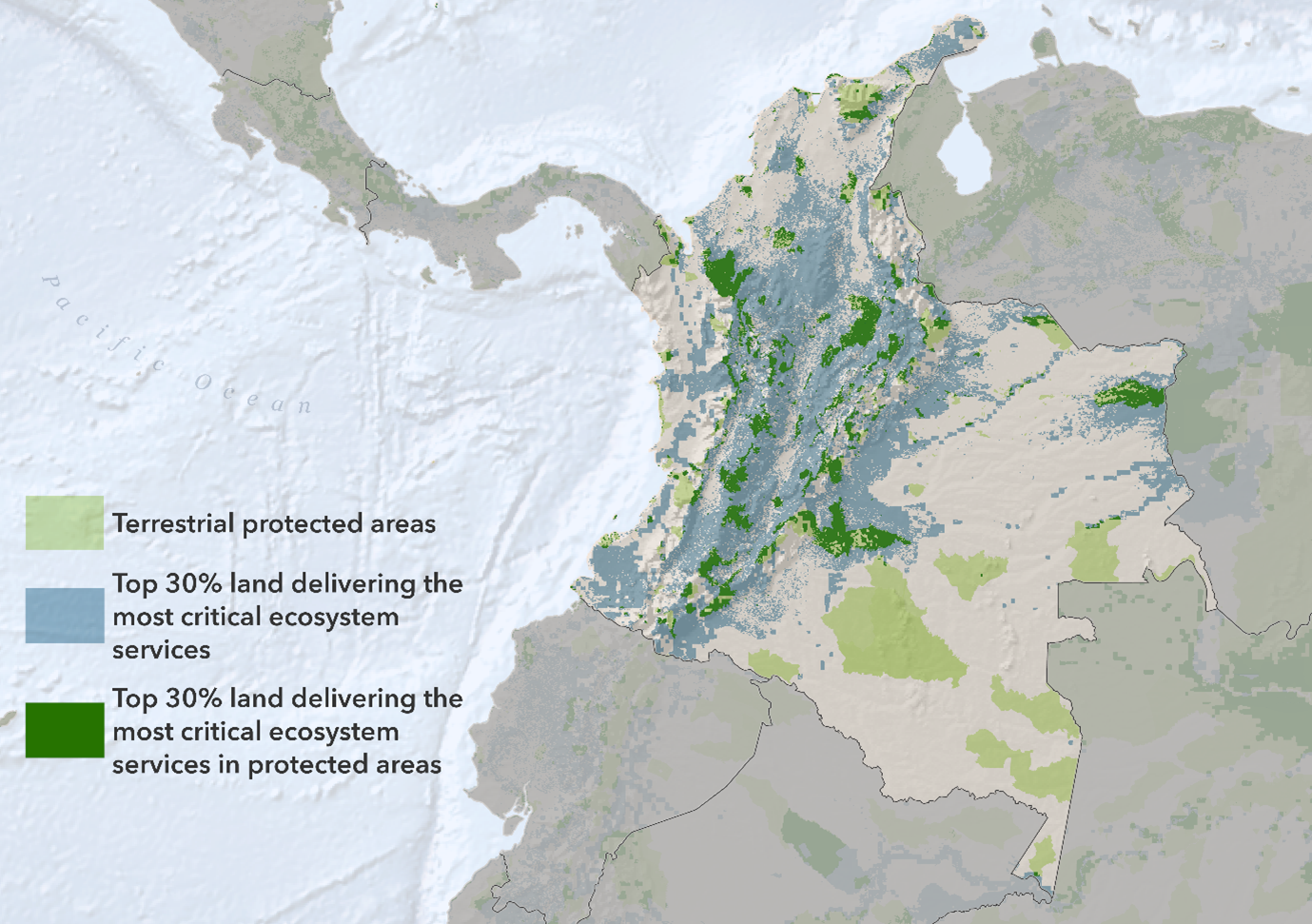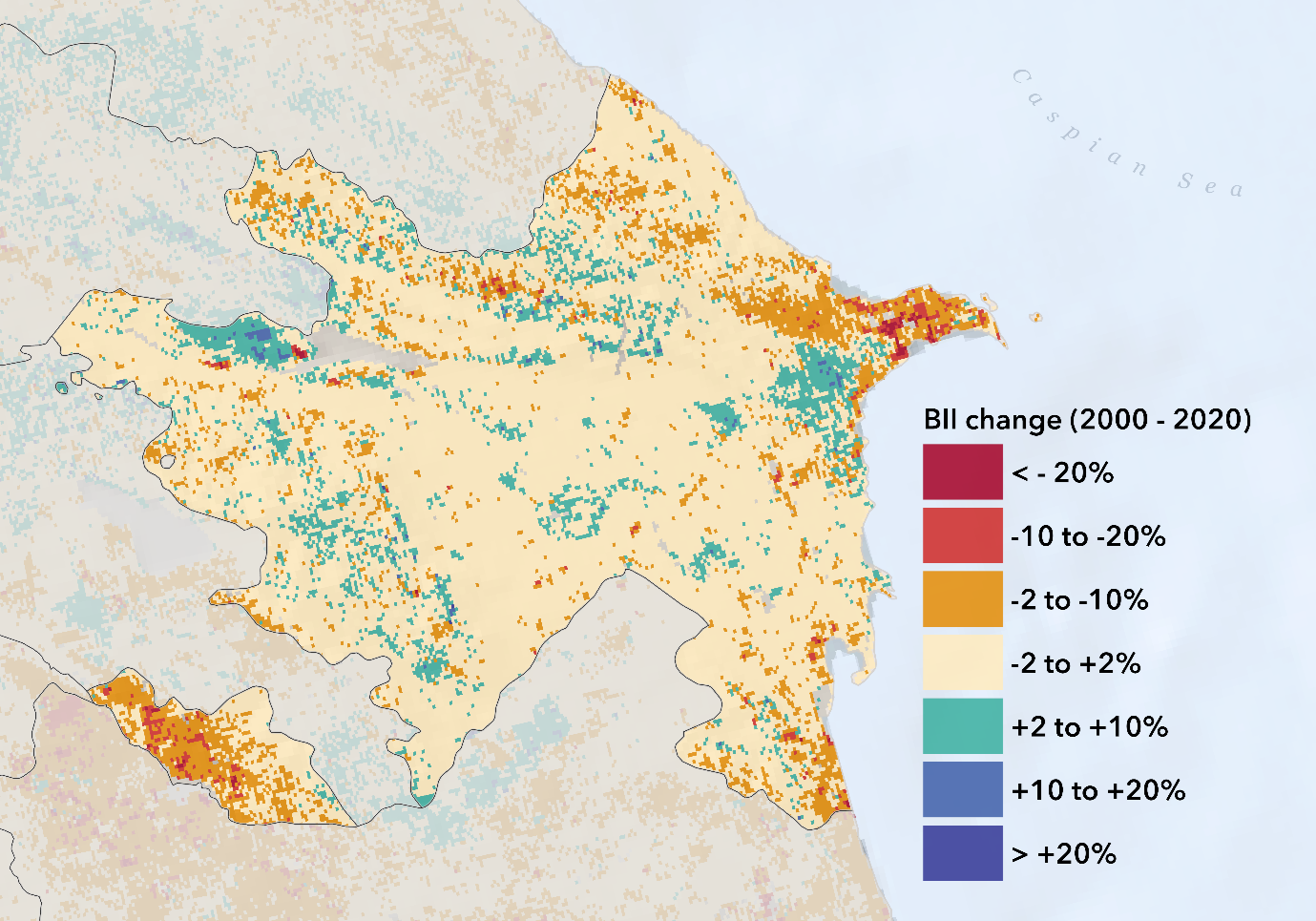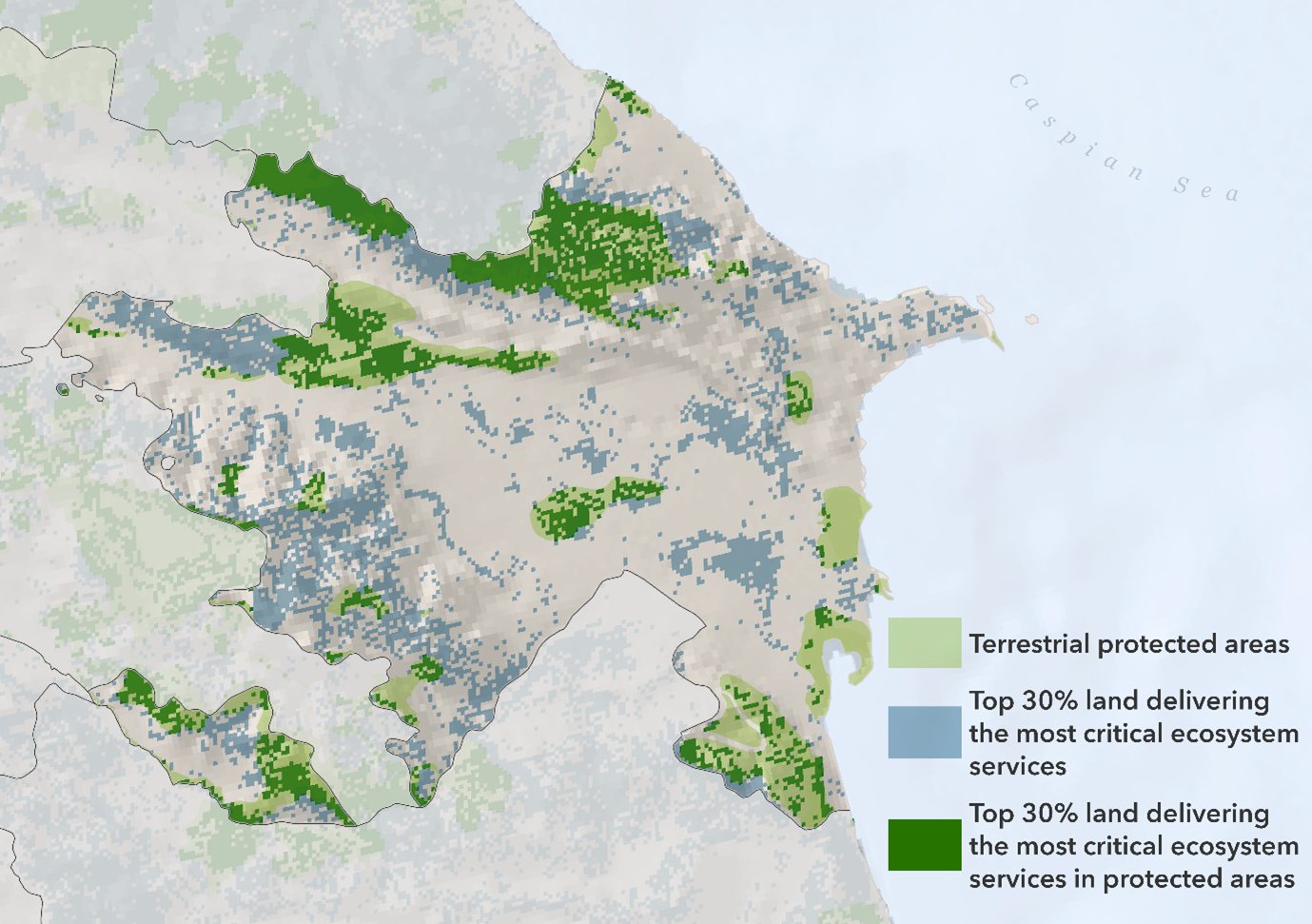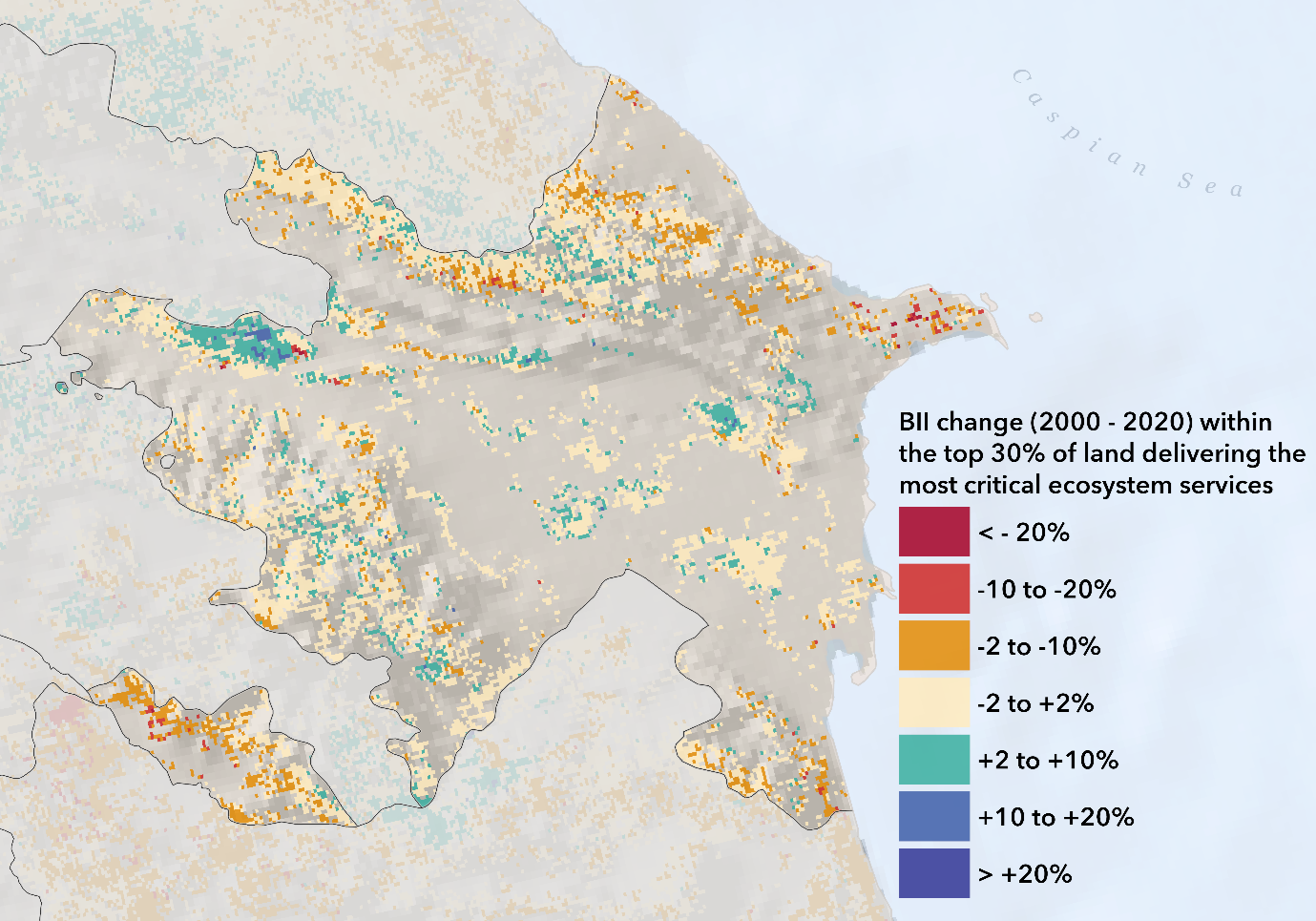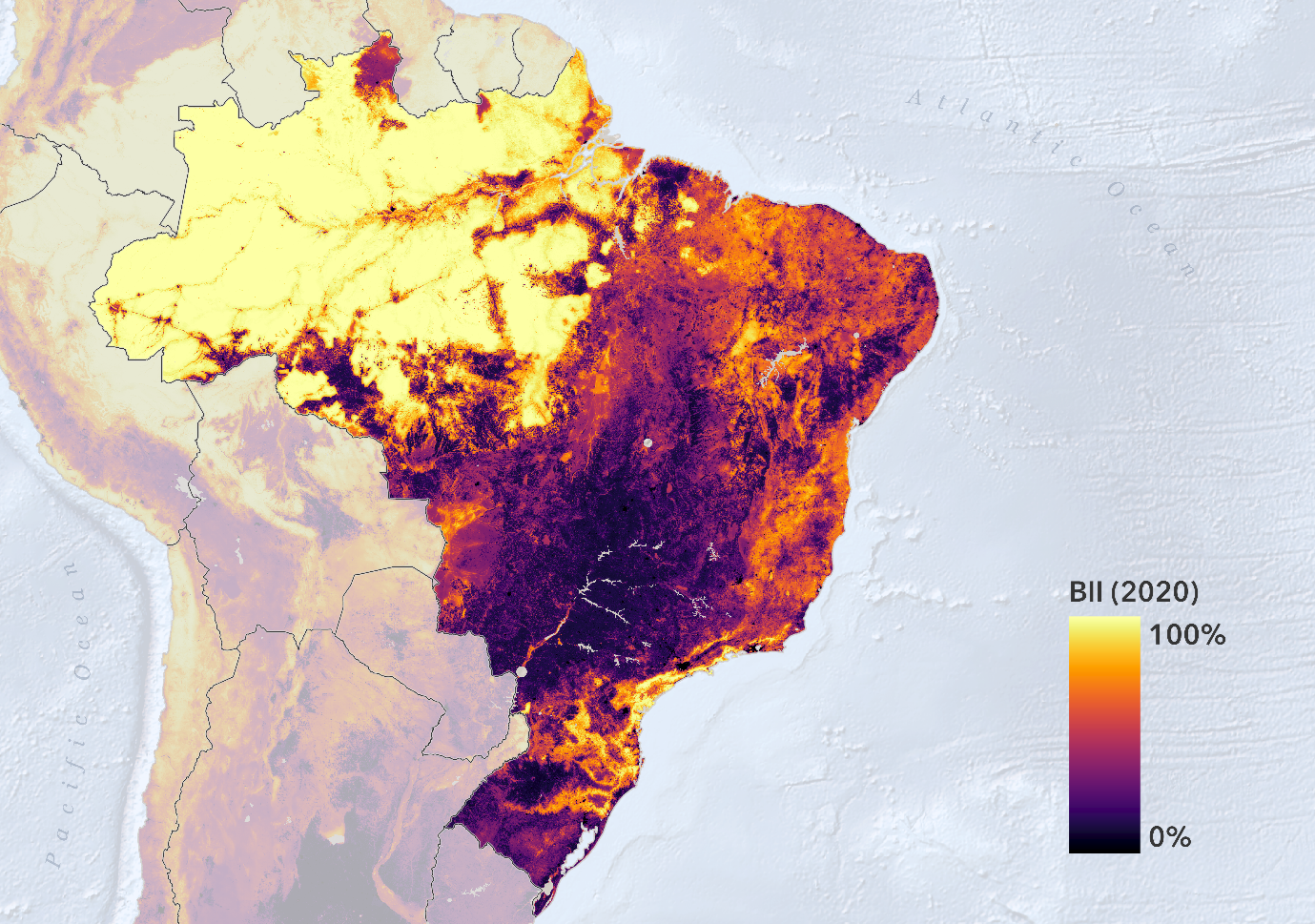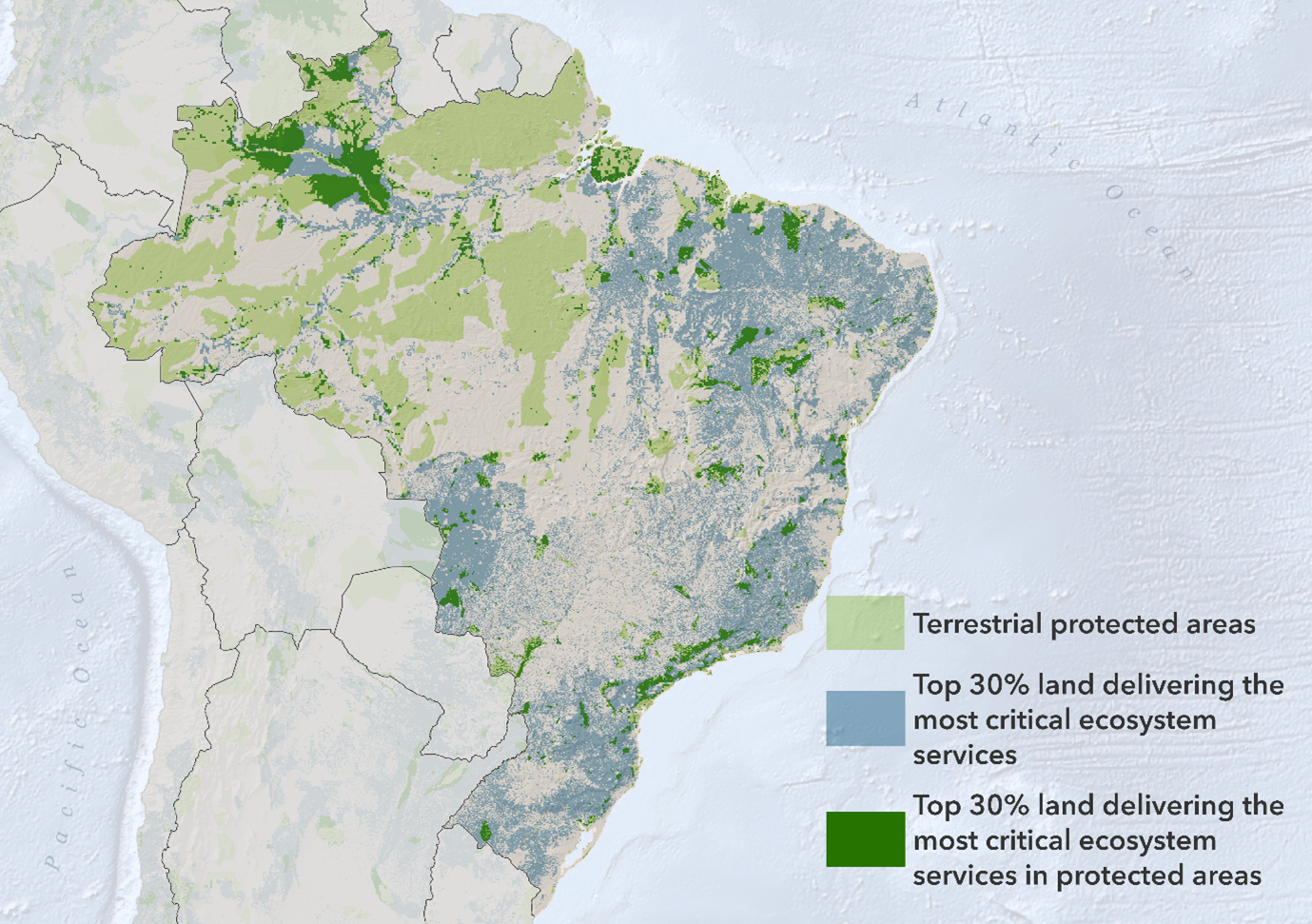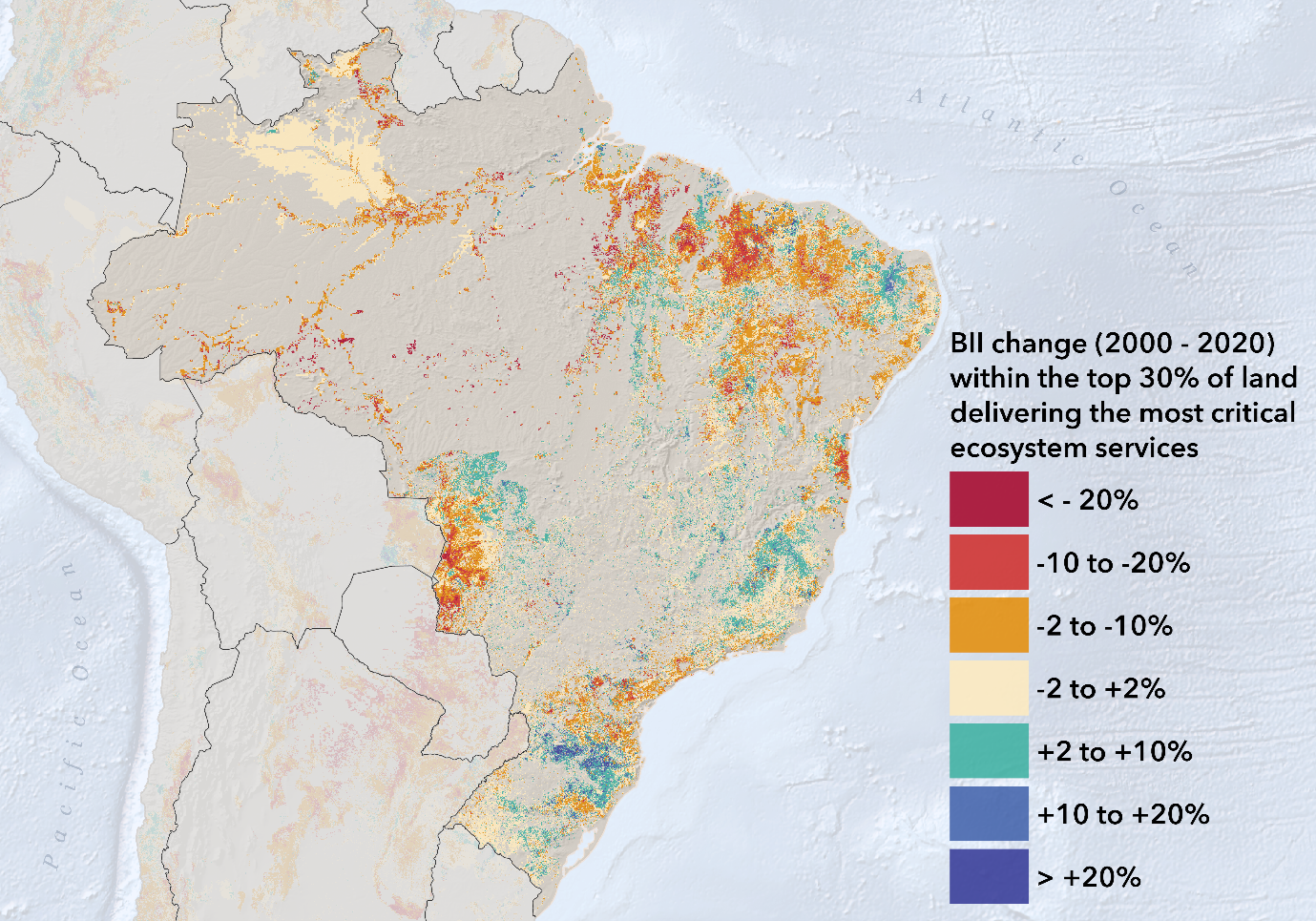New analysis from scientists at the Natural History Museum reveals that current conservation efforts are not adequately protecting the most critical ecosystem services on which six billion people depend.
In 2022, parties to the United Nations Convention on Biological Diversity signed the Kunming-Montreal Global Biodiversity Framework. This is a landmark deal which, amongst other ambitions, seeks to conserve 30% of land and waters by 2030. This target is nicknamed ‘30 by 30’.
So far, the approach to implementing 30 by 30 has been to strengthen and expand the global network of protected and conserved areas. However, our analysis shows that this might not be enough to make 30 by 30 work for people and planet.
What we found
Our analysis, using the Biodiversity Intactness Index (BII) developed by the Natural History Museum, shows that the current approach to implementing 30 by 30 on land is not adequately protecting areas delivering the most critical ecosystem services for people.
Ecosystem services are provisions from nature that directly and indirectly affect human wellbeing. They include provisions such as food, energy and raw materials, regulation of water quality and carbon storage.
Over six billion people rely on the top 30% of land that delivers the most critical ecosystem services. Currently, only 22% of the land delivering these services is located within the global protected area network. Within this 22%, biodiversity intactness is declining more quickly than it is outside protected areas. This means that current conservation efforts are not working to sustain these critical ecosystem services, and we risk losing them.
Our analysis also shows that of the important locations that are not currently situated within protected areas, biodiversity intactness has already been degraded to just 55.41%.
These findings highlight the urgency of ensuring that conservation strategies are mindful of areas delivering the most critical ecosystem services. We also need to ensure that effective management plans are in place to safeguard the protection of these areas for the future.
What we are calling for
We need to move beyond the current approach to designating protected areas and place more emphasis on the quality of those areas, their effective management and the value they return for people and nature.
To achieve this, the implementation of 30 by 30 should be driven by the following principles:
- Alongside species protection, we need to place more attention on effectively conserving the land that delivers the most critical ecosystem services for people.
- We need to move beyond the static designation of areas that merely meet minimum requirements or focus on specific species or outcomes. Instead, we should move towards a more dynamic and closely monitored process whereby areas can be ‘managed up’ to a state of greater resilience.
- Strengthening capacity at both national and international levels will enable us to monitor and model biodiversity change in a timely, thorough, and meaningful way.
